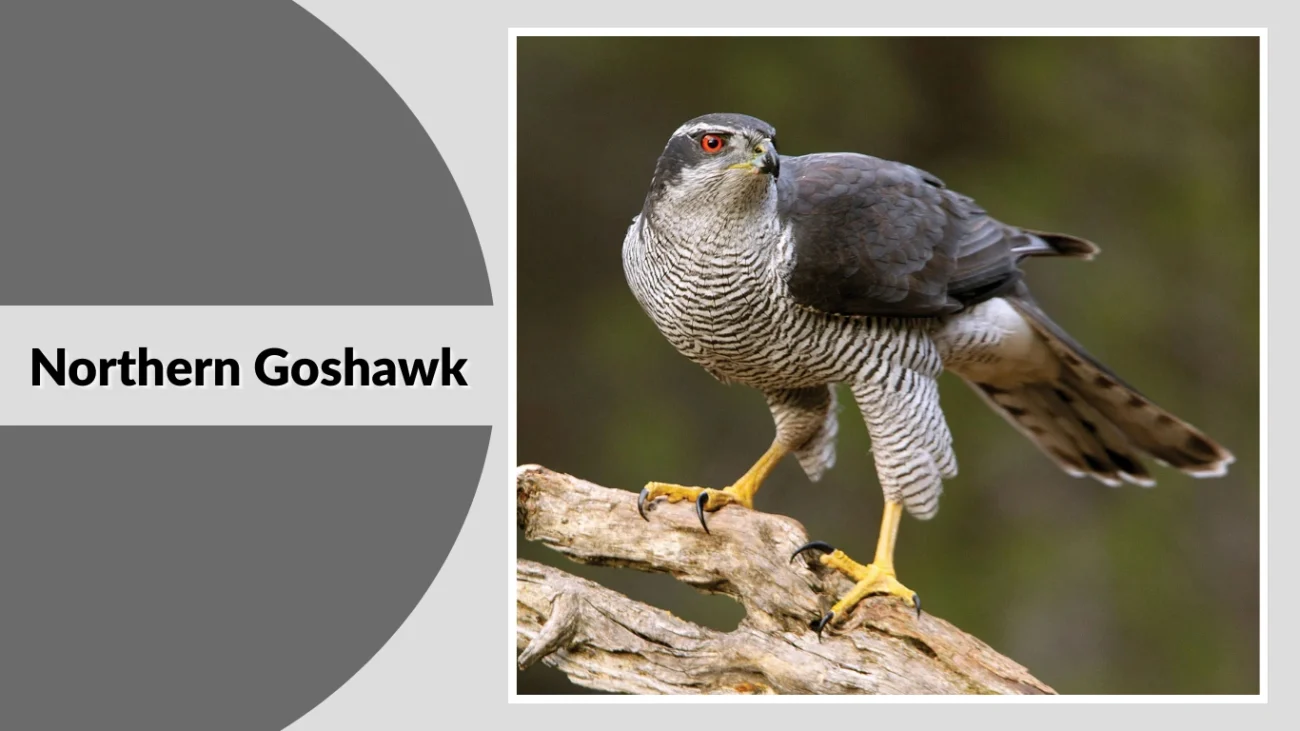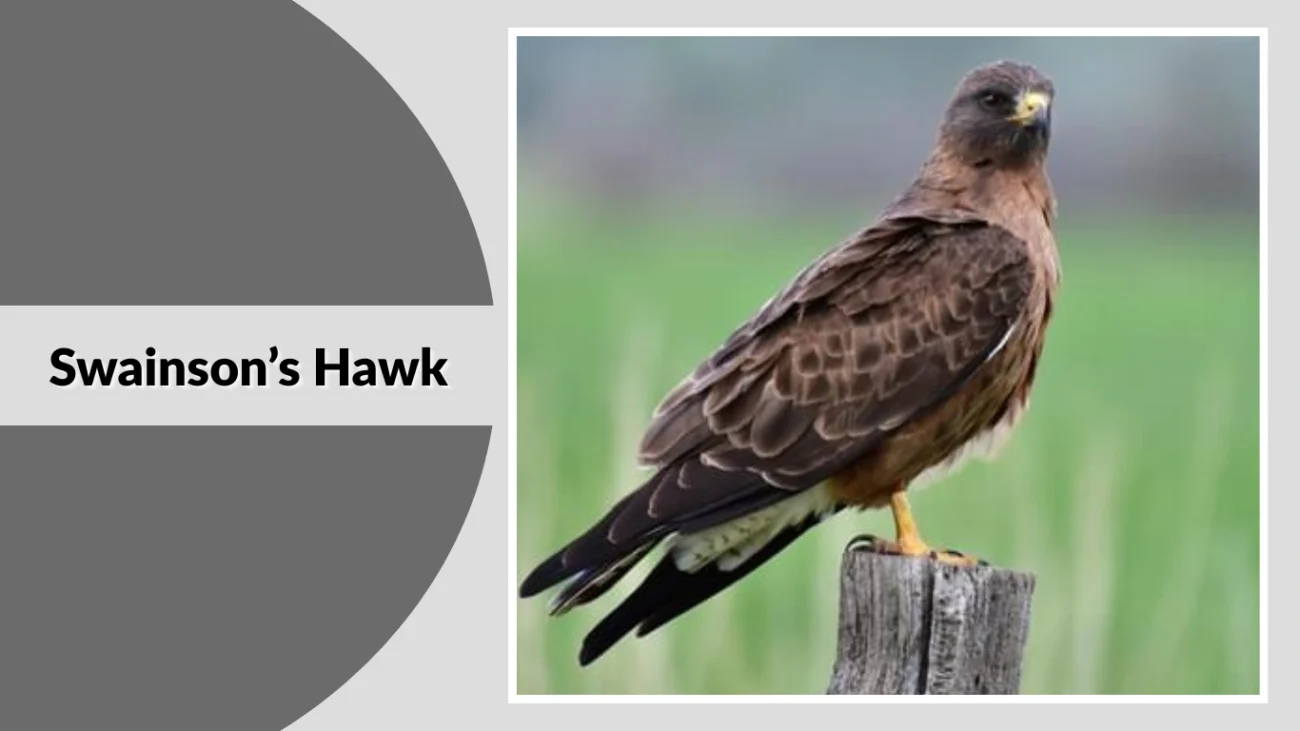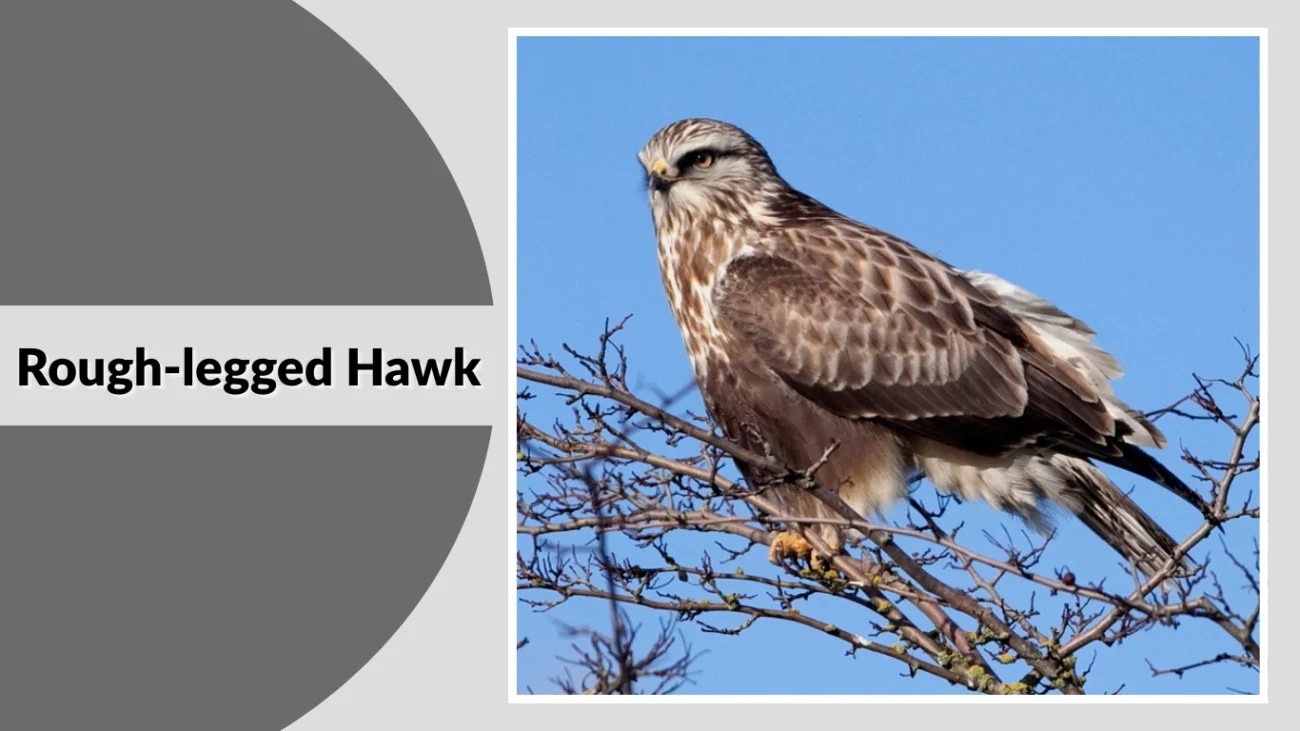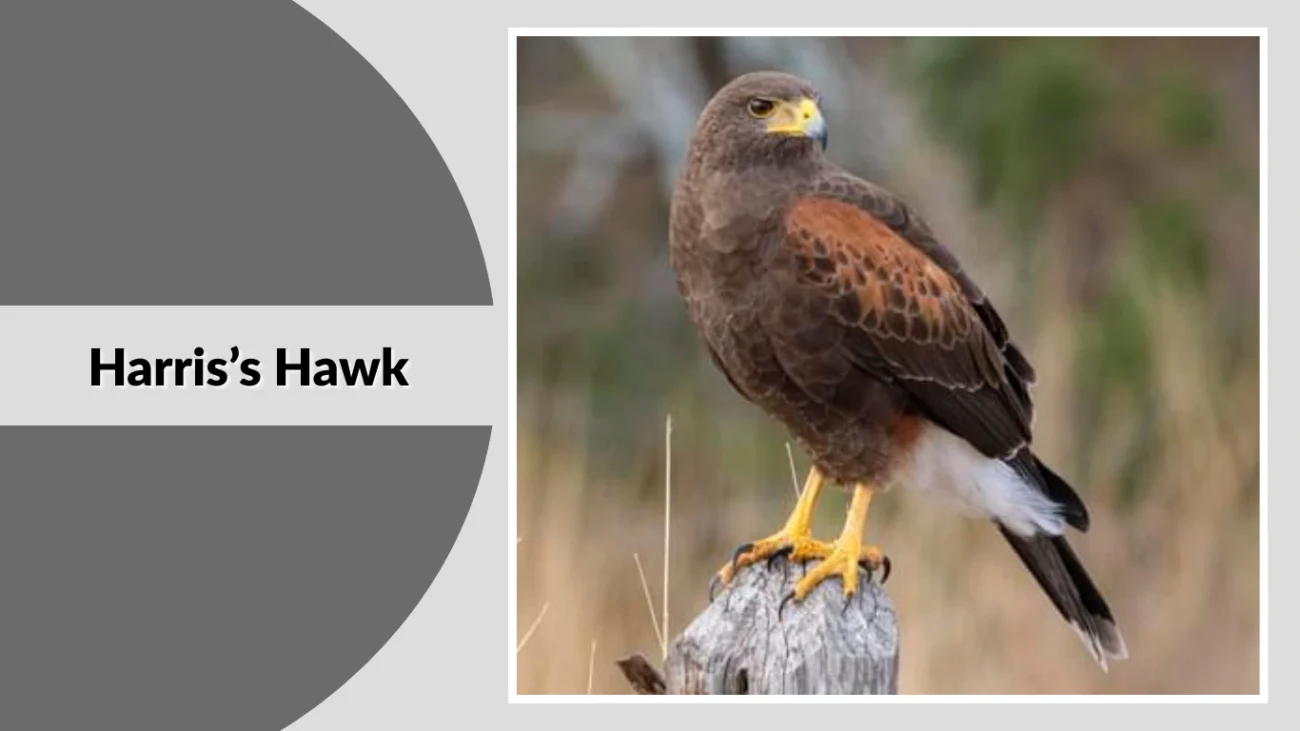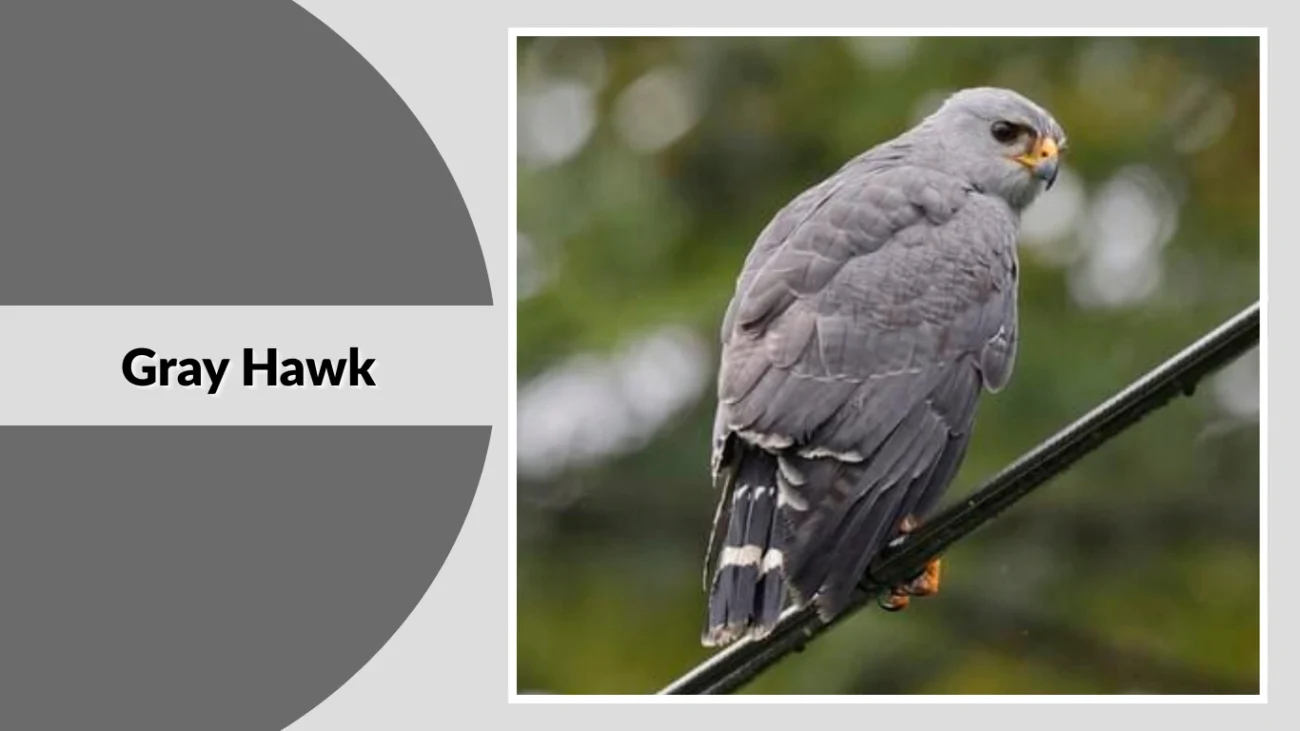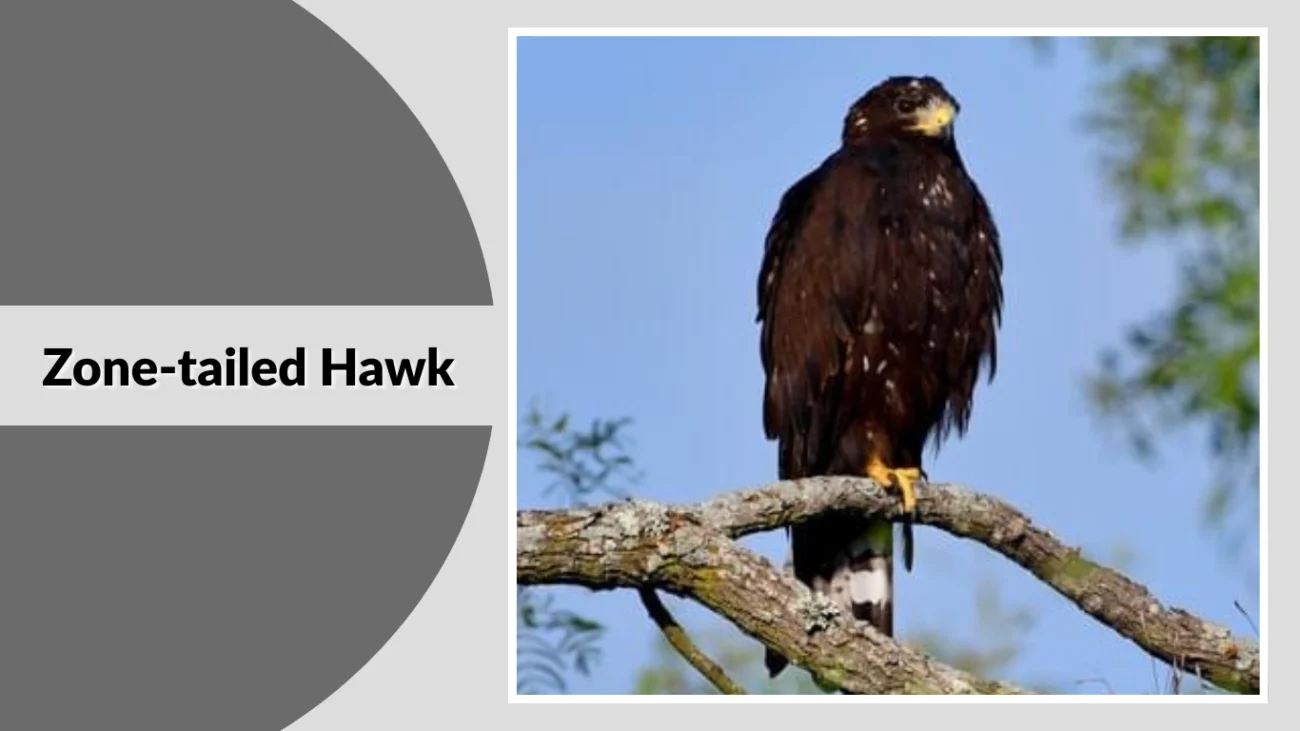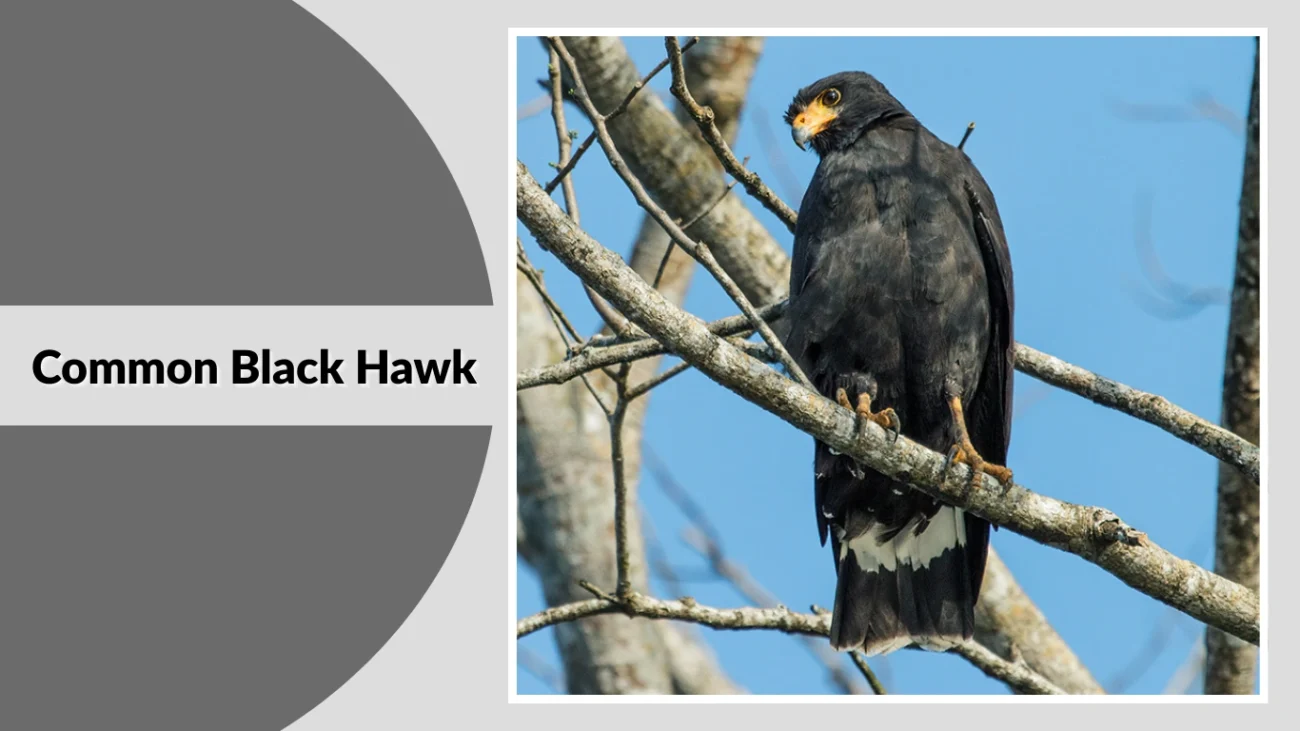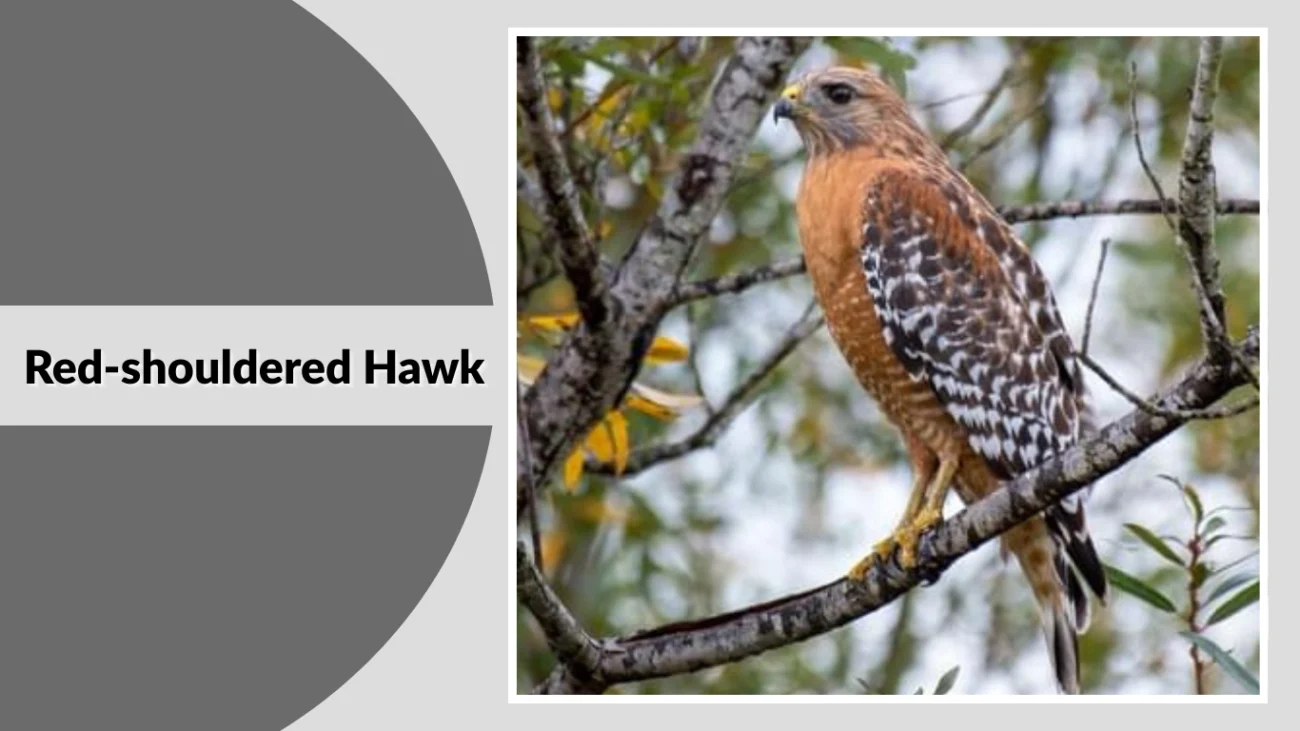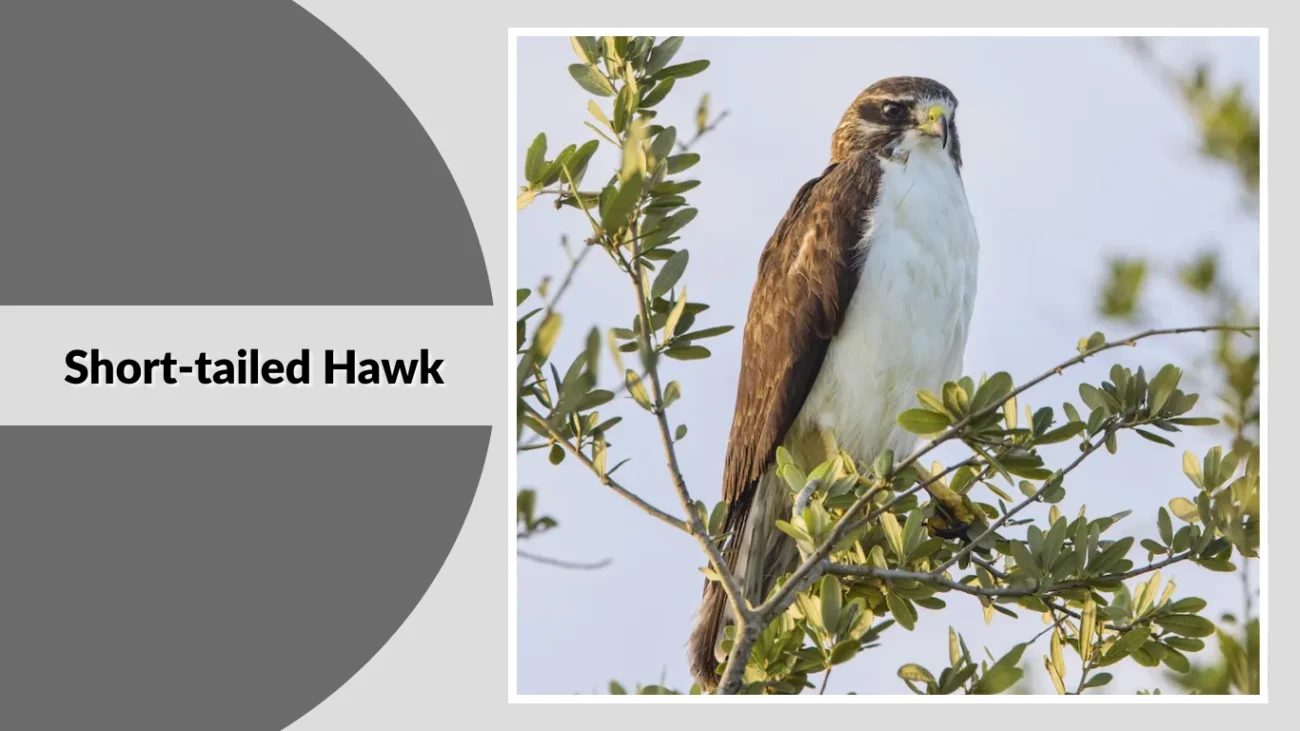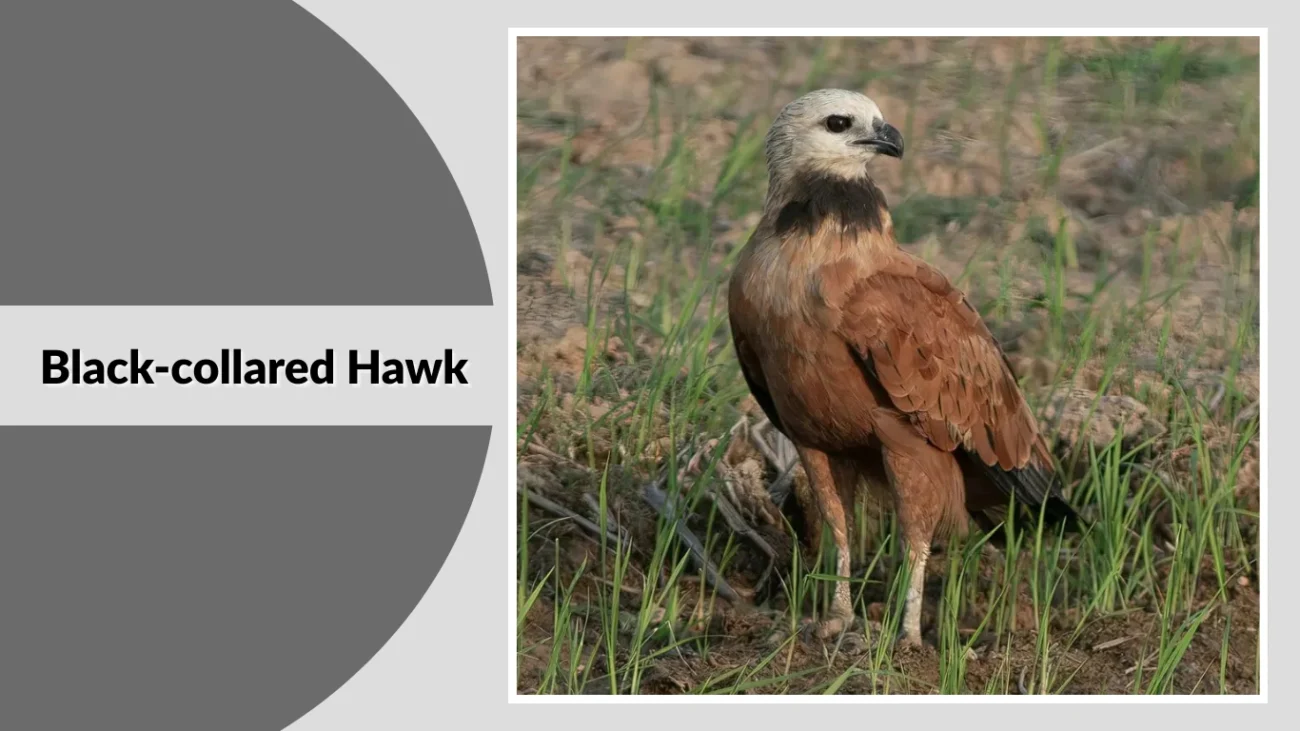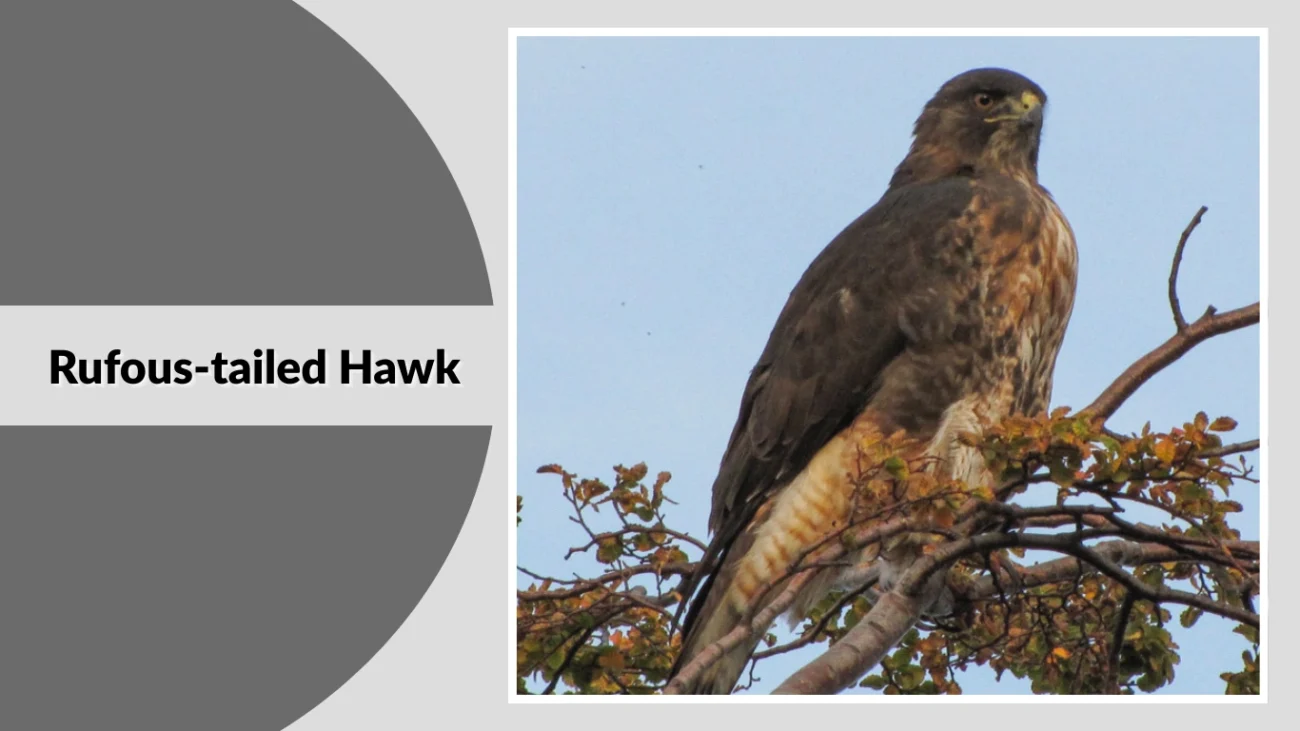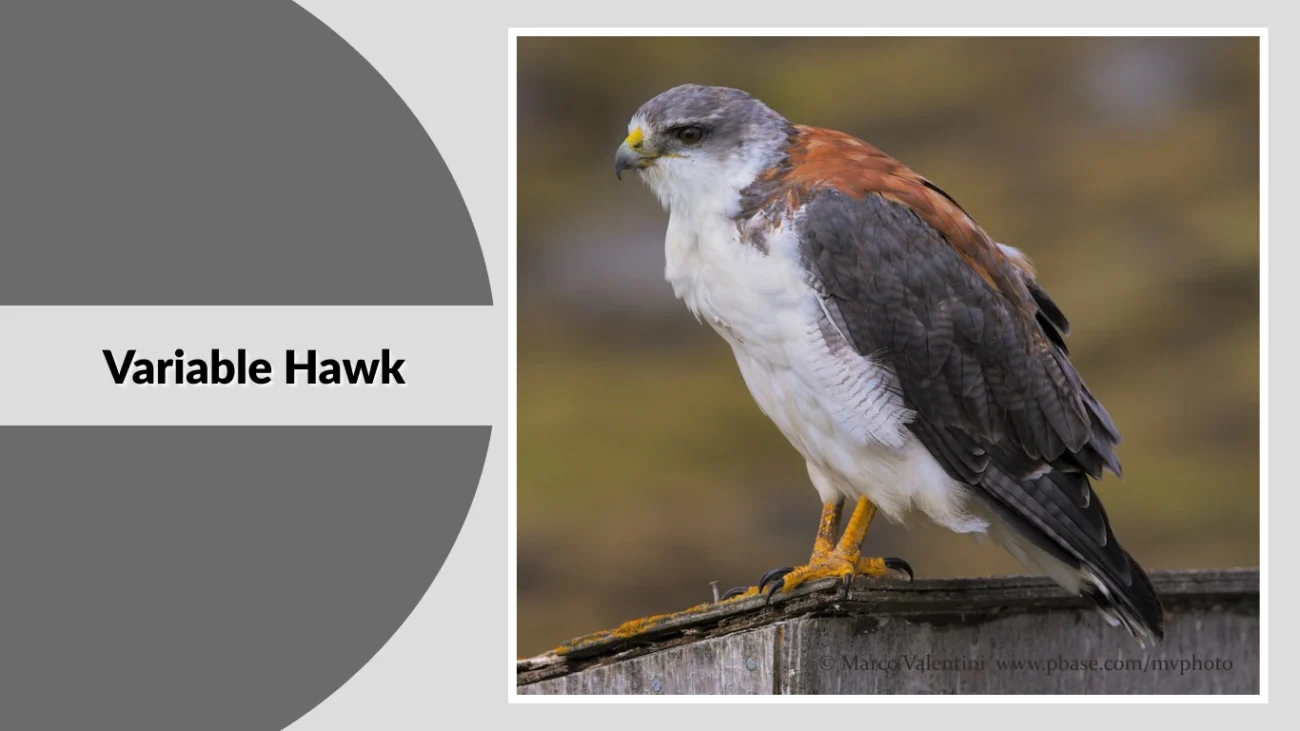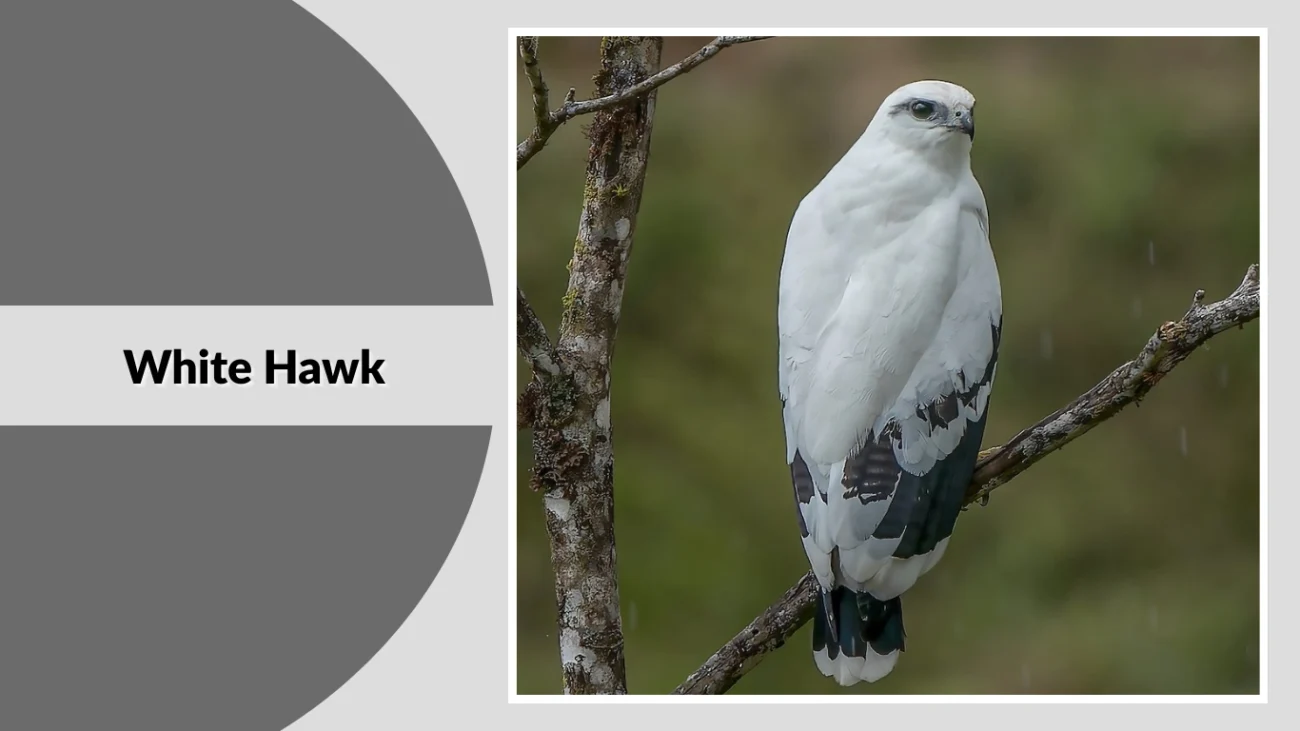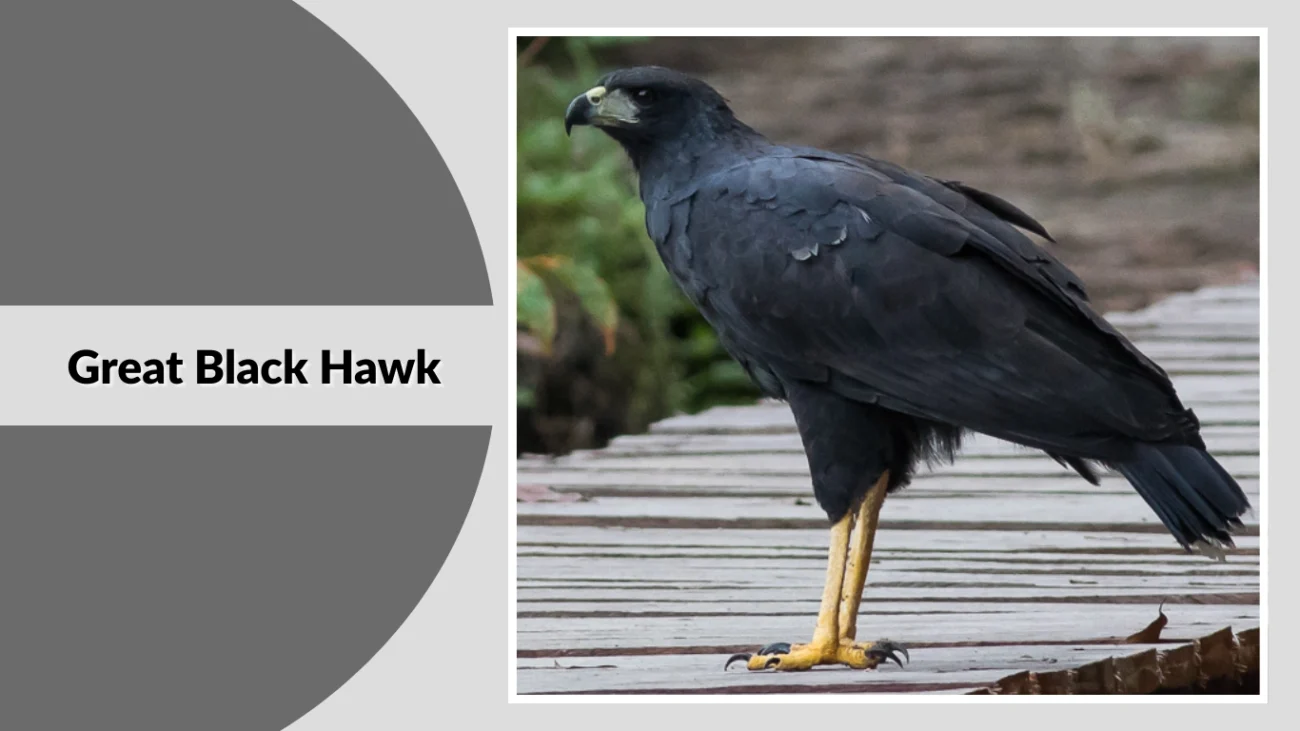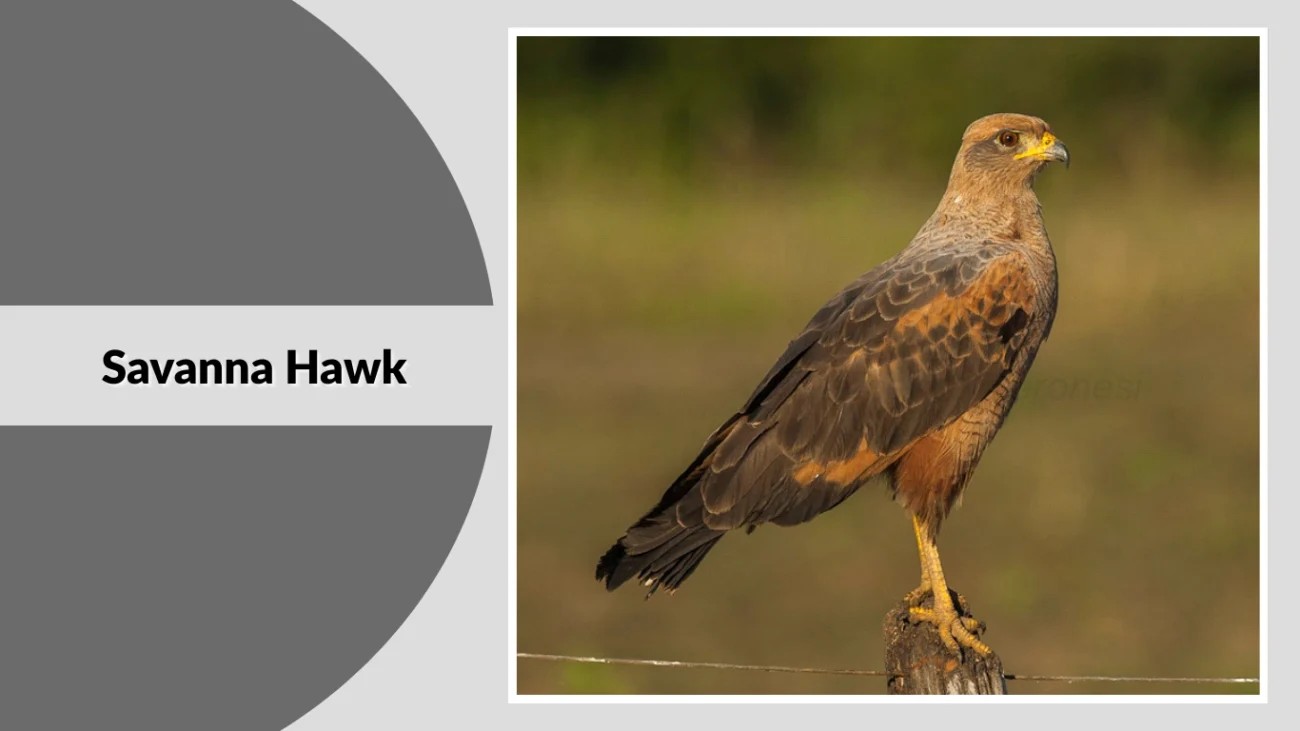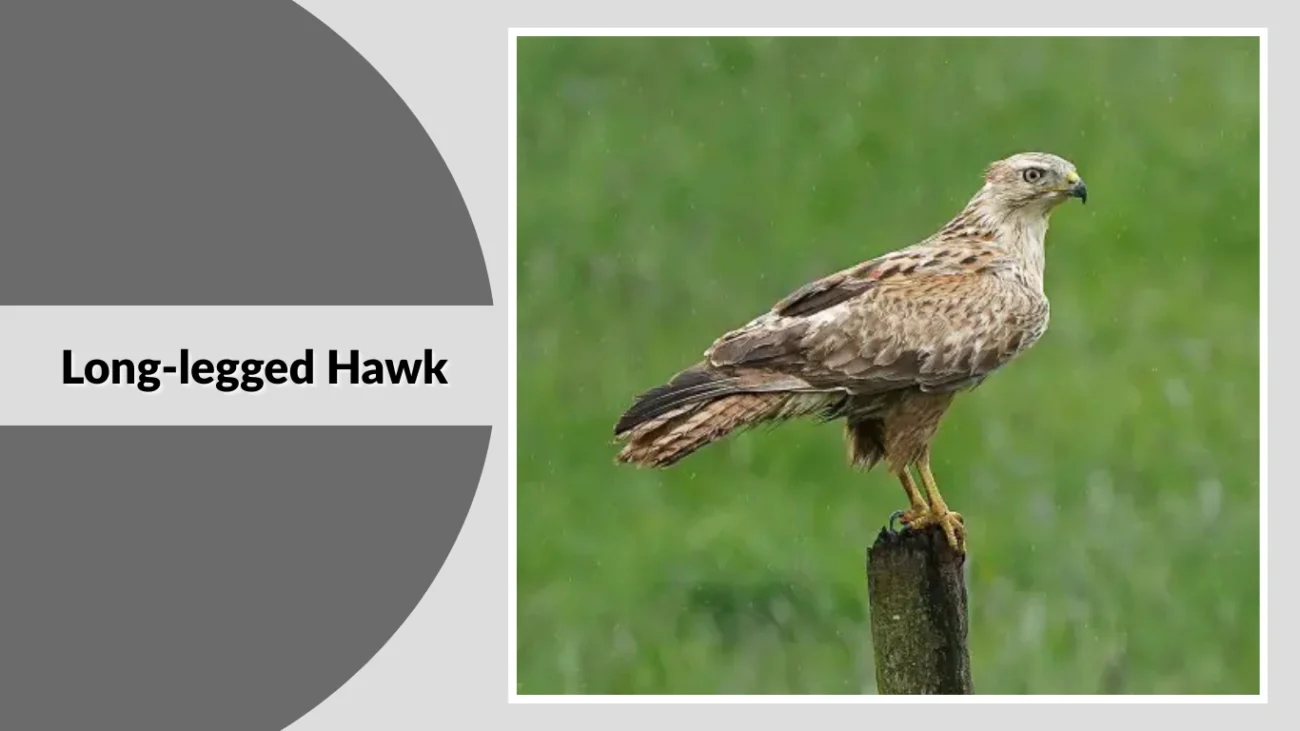Hawks are among the most fascinating and skilled predators in the bird world, known for their sharp vision, swift flight, and powerful hunting abilities. Found across nearly every continent, these raptors display a wide range of adaptations suited to their habitats — from dense forests to open grasslands and arid deserts. This guide explores 27 distinct types of hawks, highlighting their unique identification features, preferred environments, and characteristic behaviors.
1. Red-tailed Hawk
The red-tailed hawk is one of the most widespread and recognizable birds of prey in North America. Known for its distinctive reddish tail and broad wings, this raptor is often seen soaring high in the sky or perched along open fields and roadsides. It plays a vital role in controlling rodent populations and adapting well to diverse habitats.
Identification
- Scientific Name: Buteo jamaicensis
- Wingspan: 105–141 cm (41–56 in)
- Body Length: 45–65 cm (18–26 in)
- Color: Brown upperparts, pale underparts, reddish-brown tail
- Beak: Short, hooked beak suited for tearing flesh
- Eyes: Dark brown to yellowish, keen eyesight
Habitat and Distribution
The red-tailed hawk thrives in open areas like grasslands, deserts, agricultural fields, and forest edges. It ranges across most of North America, from Alaska and Canada down to Central America.
Behavior and Diet
Primarily a daytime hunter, this hawk feeds on small mammals like mice, rabbits, and squirrels, but will also take birds and reptiles. It hunts by soaring or perching and diving swiftly on its prey.
2. Cooper’s Hawk
The Cooper’s hawk is a sleek, agile bird of prey known for its exceptional flying skills, especially through dense woodland. It is a medium-sized hawk often mistaken for the sharp-shinned hawk, but it has a larger body and a more rounded tail. This hawk is an adept hunter, capable of chasing birds through tight spaces at high speed.
Identification
- Scientific Name: Accipiter cooperii
- Wingspan: 62–90 cm (24–35 in)
- Body Length: 35–50 cm (14–20 in)
- Color: Bluish-gray upperparts, reddish barring on underparts
- Tail: Rounded with dark bands and white tip
- Eyes: Bright yellow to red depending on age
Habitat and Distribution
Cooper’s hawks are found across North America, from southern Canada to northern Mexico. They thrive in forests, woodlands, suburban areas, and even city parks where prey is abundant.
Behavior and Diet
They are specialized bird hunters, targeting pigeons, doves, songbirds, and small mammals. Their hunting style involves stealthy perching followed by a high-speed pursuit, often weaving through trees with remarkable precision.
3. Sharp-shinned Hawk
The sharp-shinned hawk is the smallest hawk in North America, known for its swift, agile flight and remarkable skill in navigating through dense vegetation while hunting. Often confused with the Cooper’s hawk, it has a more petite frame and squared-off tail. These raptors are quick, stealthy predators that specialize in catching smaller birds.
Identification
- Scientific Name: Accipiter striatus
- Wingspan: 42–68 cm (17–27 in)
- Body Length: 23–37 cm (9–15 in)
- Color: Slate-gray upperparts, white underparts with reddish barring
- Tail: Square-tipped with dark bands
- Eyes: Yellow to orange, turning red with age
Habitat and Distribution
Sharp-shinned hawks inhabit forests, woodland edges, and suburban areas throughout North and Central America. They are migratory in northern regions, traveling south during colder months.
Behavior and Diet
Their primary diet consists of small songbirds, which they capture with sudden bursts of speed from cover. They also occasionally eat small mammals and insects. These hawks are ambush hunters, often using trees and shrubs as concealment before striking.
4. Ferruginous Hawk
The ferruginous hawk is the largest hawk species in North America, admired for its broad wings, pale plumage, and powerful build. Its name comes from the rusty, ferruginous coloring on its legs and shoulders. This raptor is often seen soaring over open country or perched on fence posts scanning for prey.
Identification
- Scientific Name: Buteo regalis
- Wingspan: 137–152 cm (54–60 in)
- Body Length: 56–69 cm (22–27 in)
- Color: Light morph has white underparts with rust-colored shoulders; dark morph is mostly dark brown with pale flight feathers
- Legs: Fully feathered down to the toes
- Beak: Strong and hooked for tearing meat
Habitat and Distribution
Found mainly in the open prairies, grasslands, and deserts of western North America, from Canada through the United States and into northern Mexico. They prefer wide, treeless areas for hunting.
Behavior and Diet
Ferruginous hawks are ground-hunting specialists, often preying on prairie dogs, rabbits, and ground squirrels. They are powerful fliers and may hunt individually or cooperatively in loose groups during abundant prey seasons.
5. Northern Goshawk
The northern goshawk is a powerful, large hawk known for its fierce hunting style and secretive nature. It is the largest member of the Accipiter genus, with strong wings and a long tail built for maneuvering through dense forests. Often called the “phantom of the forest,” it is rarely seen in the open and is highly territorial.
Identification
- Scientific Name: Accipiter gentilis
- Wingspan: 98–127 cm (38–50 in)
- Body Length: 48–69 cm (19–27 in)
- Color: Slate-gray upperparts, finely barred light gray underparts
- Eyes: Fierce red or orange in adults, yellow in juveniles
- Tail: Long with dark bands for agile flight through trees
Habitat and Distribution
They inhabit mature coniferous and mixed forests across North America, Europe, and Asia. In North America, they are found from Alaska and Canada down into parts of the northern United States, preferring remote, wooded regions.
Behavior and Diet
Northern goshawks are bold hunters that ambush prey with rapid bursts of speed. They feed on medium-sized birds, squirrels, hares, and other small mammals, often pursuing them through dense woodland with remarkable agility.
6. Broad-winged Hawk
The broad-winged hawk is a medium-sized raptor best known for its spectacular migration, when thousands travel together in large groups called “kettles.” During migration, they are a common sight in the Americas, but they are secretive and less noticeable during the breeding season in forested habitats.
Identification
- Scientific Name: Buteo platypterus
- Wingspan: 81–100 cm (32–40 in)
- Body Length: 34–44 cm (13–17 in)
- Color: Brown upperparts, pale underparts with horizontal barring
- Tail: Dark with two wide white bands
- Build: Broad wings and short tail for soaring flight
Habitat and Distribution
They breed in deciduous or mixed forests across eastern North America, from southern Canada down through the eastern United States. In winter, they migrate to Central and South America, traveling in massive flocks.
Behavior and Diet
Broad-winged hawks feed on small mammals, frogs, lizards, and large insects. They hunt from perches, dropping down on prey with quick, precise strikes. Their group migrations make them a favorite among birdwatchers during fall hawk watches.
7. Swainson’s Hawk
Swainson’s hawk is a long-distance migratory raptor famous for its annual journey between North and South America. With slender wings and a graceful flight, it thrives in open habitats and is often seen soaring in search of prey or insects during migration.
Identification
- Scientific Name: Buteo swainsoni
- Wingspan: 117–137 cm (46–54 in)
- Body Length: 43–56 cm (17–22 in)
- Color: Light morph has brown chest with white underparts; dark morph is mostly dark brown
- Tail: Grayish with narrow dark bands
- Build: Long, narrow wings adapted for soaring
Habitat and Distribution
Swainson’s hawks breed in the open plains, grasslands, and agricultural fields of western North America. They winter in the pampas of Argentina, traveling thousands of miles in one of the longest migrations of any raptor.
Behavior and Diet
Their diet varies seasonally — during breeding, they hunt rodents, rabbits, and reptiles, but during migration and in winter, they consume vast numbers of insects, especially grasshoppers and crickets. They often hunt in groups during insect swarms, making them a spectacular sight.
8. Rough-legged Hawk
The rough-legged hawk is a large, broad-winged raptor adapted to life in cold northern climates. It gets its name from the feathering that extends all the way down its legs — an adaptation for warmth in frigid environments. In winter, it is often seen hovering over open fields in search of prey.
Identification
- Scientific Name: Buteo lagopus
- Wingspan: 132–138 cm (52–54 in)
- Body Length: 46–59 cm (18–24 in)
- Color: Light morph has pale head, dark belly band, and mottled wings; dark morph is mostly chocolate brown
- Legs: Fully feathered to the toes
- Tail: White with a broad dark terminal band
Habitat and Distribution
This hawk breeds in the Arctic tundra of North America and Eurasia. During winter, it migrates south to open country across the United States, preferring grasslands, marshes, and agricultural fields.
Behavior and Diet
Rough-legged hawks are skilled at hovering in place while scanning for prey. They feed primarily on voles, lemmings, and other small mammals, but will also take birds when available. Their hunting style often involves low, steady flights over open ground or perching on poles to spot movement below.
9. Harris’s Hawk
The Harris’s hawk is a highly social raptor, unique among hawks for its cooperative hunting behavior. These striking birds often hunt in family groups, using teamwork to flush out and capture prey. Known for their intelligence and adaptability, they are also popular in falconry.
Identification
- Scientific Name: Parabuteo unicinctus
- Wingspan: 103–120 cm (41–47 in)
- Body Length: 46–59 cm (18–23 in)
- Color: Dark brown body with chestnut shoulders and thighs, white at the base and tip of the tail
- Beak: Strong, hooked, with yellow cere
- Legs: Long and yellow, suited for swift strikes
Habitat and Distribution
Native to the southwestern United States, Central America, and parts of South America, Harris’s hawks prefer arid habitats such as deserts, scrublands, and savannas. They are often seen perching on cacti, poles, or trees.
Behavior and Diet
Unlike most hawks, Harris’s hawks live and hunt in groups of two to six individuals. They feed on rabbits, rodents, quail, and other birds, using coordinated tactics to outmaneuver their prey. Their cooperative nature makes them one of the most fascinating raptors to observe.
10. Gray Hawk
The gray hawk is a medium-sized raptor recognized for its elegant gray plumage and sharp hunting skills. It is often found in riparian areas and open woodlands, where it soars gracefully or perches silently before striking its prey. Its distinctive whistling call is a familiar sound in its range.
Identification
- Scientific Name: Buteo plagiatus
- Wingspan: 89–103 cm (35–40 in)
- Body Length: 46–61 cm (18–24 in)
- Color: Uniform gray upperparts, finely barred underparts
- Tail: Black with broad white bands
- Legs: Yellow and relatively short compared to body size
Habitat and Distribution
Gray hawks inhabit the southwestern United States, Mexico, Central America, and parts of South America. They are often associated with river valleys, mesquite forests, and semi-open woodlands where prey is plentiful.
Behavior and Diet
These hawks primarily hunt from perches, dropping swiftly to capture lizards, snakes, and small mammals. They are also agile in the air, chasing birds through open canopies. During breeding season, they become territorial and are often seen patrolling their nesting areas.
11. Zone-tailed Hawk
The zone-tailed hawk is a clever raptor known for its remarkable resemblance to the common turkey vulture. This mimicry allows it to approach prey without alarming them, as many small animals ignore vultures but fear hawks. Its graceful, low soaring flight and contrasting plumage make it a fascinating bird to observe.
Identification
- Scientific Name: Buteo albonotatus
- Wingspan: 122–140 cm (48–55 in)
- Body Length: 45–56 cm (18–22 in)
- Color: Mostly blackish with narrow white bands on the tail and occasional light markings on wings
- Tail: Distinct black-and-white banding pattern
- Flight Style: Long, steady glides with wings slightly raised
Habitat and Distribution
They inhabit arid and semi-arid regions, including canyons, deserts, and open woodlands. Found in the southwestern United States, Mexico, Central America, and parts of South America, they often migrate seasonally between breeding and wintering grounds.
Behavior and Diet
Zone-tailed hawks feed mainly on small mammals, lizards, and birds. They often soar among turkey vultures, blending into the group until they break away to dive on unsuspecting prey. This unique hunting strategy gives them a high success rate in capturing food.
12. Common Black Hawk
The common black hawk is a sturdy, broad-winged raptor recognized for its dark plumage and preference for habitats near water. It is most often spotted along rivers, streams, and wetlands, where it patiently perches before swooping down on prey. Its distinctive, high-pitched whistle is a common sound in its range.
Identification
- Scientific Name: Buteogallus anthracinus
- Wingspan: 122–137 cm (48–54 in)
- Body Length: 43–53 cm (17–21 in)
- Color: Uniform blackish body with broad white tail band and black tip
- Legs: Yellow and robust for gripping prey
- Beak: Short, strong, and hooked
Habitat and Distribution
Found from the southwestern United States through Central America and into South America, common black hawks are closely tied to riparian habitats. They prefer mangroves, riverbanks, and marshy areas where prey is abundant.
Behavior and Diet
Their diet includes fish, crabs, frogs, reptiles, and small mammals. They hunt mainly from a perch, watching patiently before swooping down in a direct, powerful flight. Common black hawks are often territorial and remain close to their nesting sites year-round in suitable climates.
13. White-tailed Hawk
The white-tailed hawk is a striking bird of prey recognized for its contrasting plumage and preference for open country. With its long wings, bright white tail, and graceful flight, it is a familiar sight in the grasslands and savannas of its range.
Identification
- Scientific Name: Geranoaetus albicaudatus
- Wingspan: 127–147 cm (50–58 in)
- Body Length: 44–60 cm (17–24 in)
- Color: Gray upperparts, white underparts, reddish shoulders, and a pure white tail with a dark terminal band
- Legs: Yellow and strong for grasping prey
- Flight Style: Soaring with wings held in a shallow “V”
Habitat and Distribution
White-tailed hawks inhabit open grasslands, savannas, and coastal prairies, often near scattered trees. They are found from southern Texas and the Gulf Coast of the United States through Mexico, Central America, and much of South America.
Behavior and Diet
They hunt primarily from a perch or by soaring over open terrain, feeding on small mammals, reptiles, birds, and large insects. Opportunistic and adaptable, they may also scavenge when food is scarce. These hawks are territorial during breeding and often perform aerial displays to defend their nesting area.
14. Red-shouldered Hawk
The red-shouldered hawk is a medium-sized raptor admired for its striking plumage and loud, distinctive calls. It is often seen soaring above woodlands or perched along forest edges, especially near water. Its reddish shoulders and barred underparts make it one of the most visually distinctive hawks in North America.
Identification
- Scientific Name: Buteo lineatus
- Wingspan: 94–111 cm (37–44 in)
- Body Length: 38–61 cm (15–24 in)
- Color: Rich reddish-brown shoulders, rufous barring on chest, and black-and-white checkered wings
- Tail: Black with narrow white bands
- Eyes: Dark brown, giving a sharp, intense gaze
Habitat and Distribution
These hawks prefer mixed woodlands, river valleys, and swampy forests. Their range extends through eastern North America, parts of California, and down into Mexico. They often choose territories near streams or wetlands where prey is plentiful.
Behavior and Diet
Red-shouldered hawks are skilled hunters that feed on small mammals, frogs, snakes, and large insects. They use a combination of perch hunting and short, direct flights to ambush prey. During courtship, pairs perform impressive aerial displays with loud calls echoing through the forest.
15. Short-tailed Hawk
The short-tailed hawk is a small, agile raptor known for its impressive aerial hunting skills. It is unique among hawks for often catching its prey while in flight, swooping down with speed and precision. Two distinct color morphs — light and dark — make this species especially interesting to birdwatchers.
Identification
- Scientific Name: Buteo brachyurus
- Wingspan: 100–111 cm (39–44 in)
- Body Length: 38–43 cm (15–17 in)
- Color: Light morph has white underparts with dark flight feathers; dark morph is mostly dark brown to black
- Tail: Relatively short with dark bands
- Flight Style: Agile, with quick wingbeats and sudden dives
Habitat and Distribution
Short-tailed hawks are found in Florida, Mexico, Central America, and parts of South America. They inhabit forests, forest edges, and open woodlands, often near wetlands where prey is abundant.
Behavior and Diet
These hawks are skilled at hunting small birds, often ambushing them in mid-air. They also eat small mammals, reptiles, and large insects. Their hunting strategy involves soaring high, scanning for prey, and then diving rapidly to seize it before returning to the air.
16. Roadside Hawk
The roadside hawk is a small to medium-sized raptor frequently spotted perched along roadsides, as its name suggests. Its adaptability to open and semi-open environments makes it one of the most commonly seen hawks in parts of Central and South America. Despite its smaller size, it is a bold and opportunistic hunter.
Identification
- Scientific Name: Rupornis magnirostris
- Wingspan: 71–91 cm (28–36 in)
- Body Length: 31–41 cm (12–16 in)
- Color: Brownish-gray upperparts, pale underparts with reddish-brown barring
- Tail: Long with dark bands and a white tip
- Eyes: Yellow to orange, giving a sharp, alert expression
Habitat and Distribution
This species is widely distributed from Mexico through Central America and into most of South America. It thrives in open woodlands, savannas, agricultural fields, and urban edges, often favoring areas near roads and clearings.
Behavior and Diet
The roadside hawk hunts from low perches, swooping down quickly to snatch lizards, small birds, mammals, and insects. It is highly territorial, often vocalizing loudly when disturbed. Its tolerance of human activity has allowed it to expand into more developed areas without losing its hunting efficiency.
17. Black-collared Hawk
The black-collared hawk is a striking raptor known for its rich chestnut plumage and bold black collar marking. It is closely associated with wetland environments and is an expert at catching fish, often being compared to an osprey in its hunting style.
Identification
- Scientific Name: Busarellus nigricollis
- Wingspan: 110–129 cm (43–51 in)
- Body Length: 46–56 cm (18–22 in)
- Color: Chestnut body, black collar across the throat, pale head with dark streaking
- Tail: Short and pale with dark barring
- Legs: Yellow, strong for grasping slippery prey
Habitat and Distribution
This hawk is found in Central and South America, inhabiting riverbanks, lakes, marshes, and mangrove swamps. It is rarely seen far from water and prefers areas rich in fish and other aquatic prey.
Behavior and Diet
The black-collared hawk hunts by perching quietly near water or flying low over the surface before plunging feet-first to snatch fish. It also eats frogs, crabs, and occasional small mammals or birds. Its distinctive fishing technique and wetland habitat make it one of the more specialized hawks in the Americas.
18. Rufous-tailed Hawk
The rufous-tailed hawk is a powerful bird of prey native to the southern regions of South America. It is known for its striking rufous-colored tail and broad wings, making it a distinctive silhouette when soaring over open landscapes. This species is considered rare and is often a sought-after sighting for birdwatchers.
Identification
- Scientific Name: Buteo ventralis
- Wingspan: 120–140 cm (47–55 in)
- Body Length: 50–60 cm (20–24 in)
- Color: Dark brown to black upperparts, pale or rufous underparts depending on morph, and a rich rufous tail
- Tail: Broad, reddish-brown with faint barring
- Build: Sturdy with broad wings adapted for soaring
Habitat and Distribution
Found primarily in southern Chile and Argentina, including parts of Tierra del Fuego, the rufous-tailed hawk inhabits open grasslands, forest edges, and mountainous areas. It favors habitats with high perching spots for hunting.
Behavior and Diet
This hawk hunts from perches or while soaring, feeding on birds, small mammals, and reptiles. It is a strong, persistent hunter capable of chasing prey in both open skies and forested environments. Due to its low population density, sightings are often considered special events for raptor enthusiasts.
19. Galápagos Hawk
The Galápagos hawk is a rare and powerful raptor found only in the Galápagos Islands. As the top predator in its ecosystem, it plays a crucial role in maintaining the balance of the island’s unique wildlife. Known for its fearlessness around humans, this hawk is one of the most approachable wild raptors in the world.
Identification
- Scientific Name: Buteo galapagoensis
- Wingspan: 116–140 cm (46–55 in)
- Body Length: 45–58 cm (18–23 in)
- Color: Dark brown to sooty black plumage with lighter mottling in younger birds
- Tail: Broad and dark with faint barring
- Eyes: Dark brown, giving a bold, piercing look
Habitat and Distribution
Endemic to the Galápagos Islands, this hawk inhabits a variety of landscapes, including rocky shorelines, dry scrublands, and open volcanic terrain. It is found on several islands, though its population is small and fragmented.
Behavior and Diet
Galápagos hawks are opportunistic hunters and scavengers. They feed on insects, lizards, snakes, small birds, and carrion. Often hunting in small family groups, they exhibit cooperative hunting behaviors similar to those of Harris’s hawks. Due to their isolation, they have few natural threats apart from human activity.
20. Variable Hawk
The variable hawk is a versatile and highly adaptable raptor found across a wide range of habitats in South America. Its name reflects the remarkable variation in its plumage, which can range from almost entirely white to dark brown or gray, with many intermediate forms.
Identification
- Scientific Name: Geranoaetus polyosoma
- Wingspan: 120–150 cm (47–59 in)
- Body Length: 45–60 cm (18–24 in)
- Color: Extremely variable — may be light with white underparts and gray upperparts, dark brown overall, or intermediate with mixed plumage patterns
- Tail: Often white or light gray with a dark terminal band
- Build: Stocky body with broad wings adapted for soaring
Habitat and Distribution
The variable hawk inhabits grasslands, scrublands, mountains, and coastal regions. It ranges from Colombia and Venezuela south through the Andes to Tierra del Fuego, thriving at elevations from sea level to over 4,500 meters.
Behavior and Diet
It feeds on small mammals, birds, reptiles, and large insects. The variable hawk hunts from a perch or while soaring, often hovering before diving on prey. Its adaptability in both diet and habitat has made it one of the most successful raptors in its range.
21. White Hawk
The white hawk is a visually stunning raptor, easily recognized by its striking white plumage and contrasting black markings on its wings and tail. Its majestic appearance and graceful flight make it a favorite among birdwatchers in its range.
Identification
- Scientific Name: Pseudastur albicollis
- Wingspan: 110–120 cm (43–47 in)
- Body Length: 46–56 cm (18–22 in)
- Color: Predominantly white body with black wingtips and black tail band
- Eyes: Dark, set in a pale facial area
- Build: Medium-sized hawk with broad wings and a short tail
Habitat and Distribution
This species inhabits tropical and subtropical forests, often along rivers and clearings. It ranges from southern Mexico through Central America and into much of South America, particularly the Amazon Basin.
Behavior and Diet
The white hawk often hunts from a perch within the forest, dropping down to seize reptiles, amphibians, small mammals, and birds. It is also known to follow monkey troops, taking advantage of prey flushed out by their movement. Its slow, soaring flight above the canopy is a typical sight in its habitat.
22. Crane Hawk
The crane hawk is a slender, long-legged raptor notable for its unique hunting behavior and striking appearance. Its long legs and double-jointed knees allow it to reach into tree cavities and crevices to extract prey, a rare ability among hawks.
Identification
- Scientific Name: Geranospiza caerulescens
- Wingspan: 100–120 cm (39–47 in)
- Body Length: 46–56 cm (18–22 in)
- Color: Slate-gray to bluish-gray body with black-and-white barred tail
- Legs: Exceptionally long, yellow-orange, and highly flexible
- Eyes: Bright red or orange in adults
Habitat and Distribution
The crane hawk inhabits forests, woodlands, and wetlands from Mexico through Central America and into much of South America. It is often found near water, where trees provide abundant hunting opportunities.
Behavior and Diet
This hawk is an opportunistic feeder, consuming lizards, frogs, birds, and insects. Its most distinctive hunting method involves hanging from branches and reaching deep into tree holes or bromeliads to extract hidden prey. It can also hunt in flight, soaring slowly while scanning for movement below.
23. Great Black Hawk
The great black hawk is a large, robust raptor with an imposing presence and a strong association with tropical forests and wetlands. Its dark plumage and broad wings make it a distinctive figure when soaring above riverbanks or perched in tall trees near water.
Identification
- Scientific Name: Buteogallus urubitinga
- Wingspan: 127–143 cm (50–56 in)
- Body Length: 56–64 cm (22–25 in)
- Color: Solid blackish plumage with a slight sheen, contrasted by a broad white tail band and black tip
- Legs: Yellow and sturdy, ideal for seizing a variety of prey
- Beak: Strong, hooked, and dark with a yellow cere
Habitat and Distribution
This species inhabits tropical and subtropical forests, mangroves, and river edges. Its range extends from Mexico through Central America and much of South America, often in areas rich with aquatic life.
Behavior and Diet
Great black hawks are opportunistic feeders, preying on reptiles, amphibians, birds, fish, crabs, and small mammals. They typically hunt from a perch, dropping swiftly to seize prey, but they are also known to scavenge. Their preference for wetland and riparian habitats makes them a regular sight near large rivers and lagoons.
24. Savanna Hawk
The savanna hawk is a long-legged raptor commonly seen in open country, where it hunts both from perches and on foot. Its distinctive coloration and elegant stance make it a familiar sight across much of tropical and subtropical South America.
Identification
- Scientific Name: Buteogallus meridionalis
- Wingspan: 120–143 cm (47–56 in)
- Body Length: 46–61 cm (18–24 in)
- Color: Brownish-gray body with rufous wings and thighs, barred tail with a dark terminal band
- Legs: Long and yellow-orange, adapted for terrestrial hunting
- Build: Slender with broad wings for soaring over open areas
Habitat and Distribution
This species is found in savannas, grasslands, wetlands, and agricultural areas from Panama and Trinidad south through most of South America, except dense rainforests and high mountain regions.
Behavior and Diet
The savanna hawk feeds on a wide range of prey, including snakes, lizards, frogs, insects, and small mammals. It often walks or runs on the ground to catch prey, a behavior uncommon among most hawks. It is frequently seen perched on fence posts or low trees, scanning for movement across open fields.
25. Long-legged Hawk (Long-legged Buzzard)
The long-legged hawk, more commonly known as the long-legged buzzard, is a large, powerful raptor adapted to open and arid landscapes. Its long legs and broad wings make it well-suited for soaring over vast plains and deserts in search of prey.
Identification
- Scientific Name: Buteo rufinus
- Wingspan: 135–160 cm (53–63 in)
- Body Length: 50–65 cm (20–26 in)
- Color: Highly variable — light morphs are pale sandy or rufous with dark flight feathers, while dark morphs are uniformly brown
- Legs: Long and fully feathered
- Tail: Often pale with a dark subterminal band
Habitat and Distribution
This hawk inhabits dry grasslands, deserts, semi-deserts, and mountainous areas. It is found across southeastern Europe, North Africa, the Middle East, and parts of Central and South Asia, preferring open spaces for hunting.
Behavior and Diet
The long-legged hawk feeds on small mammals, reptiles, and large insects. It often hunts from the air, using its keen eyesight to spot prey from a distance before diving in a swift, controlled descent. It is a solitary hunter but may be seen in loose gatherings where food is abundant.
26. Mountain Hawk-Eagle
The mountain hawk-eagle is a powerful and fierce bird of prey that inhabits mountainous and forested regions of Asia. Known for its strength, agility, and striking plumage, it is a top predator in its habitat and is sometimes used in traditional falconry.
Identification
- Scientific Name: Nisaetus nipalensis
- Wingspan: 127–162 cm (50–64 in)
- Body Length: 69–84 cm (27–33 in)
- Color: Brown upperparts, heavily streaked white underparts, and a distinctive crest on the head
- Tail: Long with dark bands
- Eyes: Bright yellow, giving an intense, predatory look
Habitat and Distribution
Found in forested hills and mountainous areas across South Asia, Southeast Asia, and parts of East Asia, this hawk-eagle prefers regions with dense tree cover and nearby open spaces for hunting.
Behavior and Diet
The mountain hawk-eagle hunts birds, mammals, and reptiles, often swooping down from great heights with incredible speed and force. It is highly territorial and fiercely defends its nesting area, making it one of the most formidable raptors in its range.
27. Japanese Sparrowhawk
The Japanese sparrowhawk is a small, fast, and agile raptor admired for its swift hunting style and sharp aerial maneuvers. Despite its size, it is a fearless predator capable of taking down prey nearly its own weight. Its compact build and pointed wings make it highly maneuverable in dense forests.
Identification
- Scientific Name: Accipiter gularis
- Wingspan: 58–65 cm (23–26 in)
- Body Length: 27–35 cm (11–14 in)
- Color: Males have blue-gray upperparts and rufous-barred underparts; females are browner with heavier barring
- Eyes: Bright yellow in both sexes
- Tail: Long and banded, aiding in agile flight
Habitat and Distribution
This species breeds in eastern Asia, including Japan, Korea, China, and parts of Russia. It prefers mixed and deciduous forests, often near rivers and open glades. During winter, many migrate south to Southeast Asia and the Philippines.
Behavior and Diet
Japanese sparrowhawks hunt mainly small birds, catching them with sudden bursts of speed and precision in mid-air. They also feed on insects and small mammals. Their hunting style relies heavily on stealth, using forest cover before making a lightning-fast strike.






